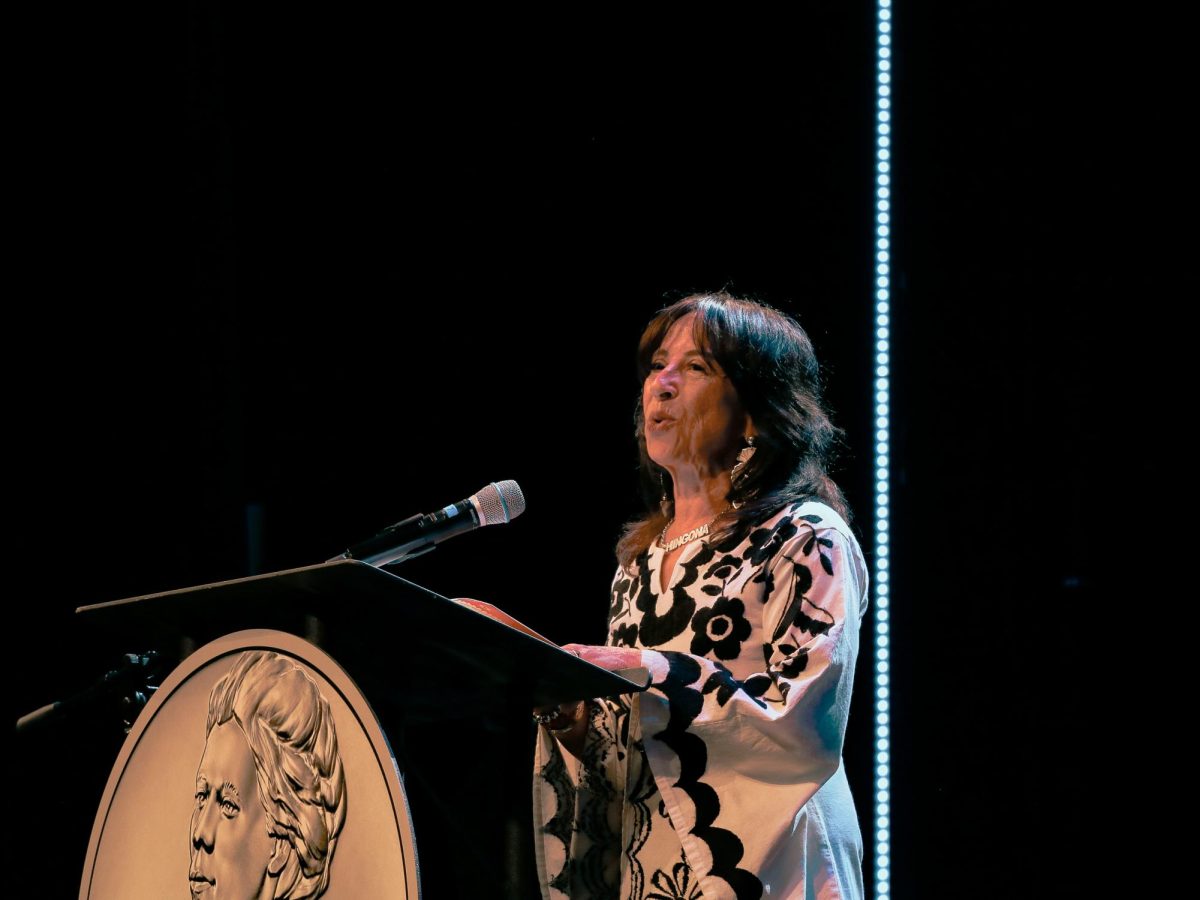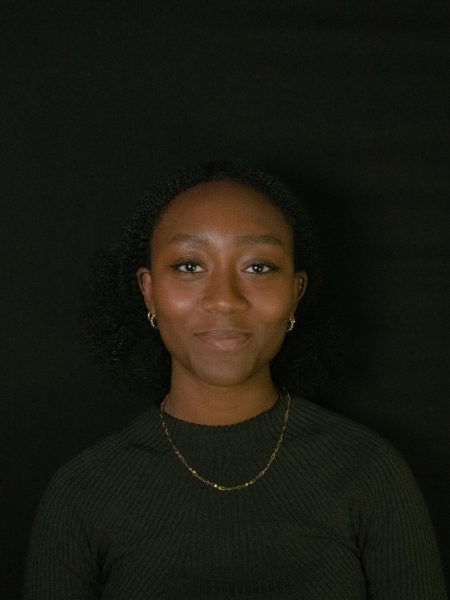UTSA hosted the Jovita Idár Quarter Release Thursday at the downtown Buena Vista Theater in collaboration with the United States Mint and the National Women’s History Museum. The event commemorated the achievements of Mexican-American journalist, suffragist and activist Jovita Idár with the creation of her dedicated quarter. It also served to launch Hispanic Heritage Month, which takes place Sept. 15 through Oct. 15.
The quarter is the ninth and most recent in the national American Women Quarters Program, which features prominent American women and began dedications with Maya Angelou and Dr. Sally Ride. The design is printed on the reverse, or the tail side, of a regular quarter. On it, there is a portrait of Idár with her hands clasped, and on her dress are miniature inscriptions of her accomplishments, careers and the newspapers she wrote for. The art was designed by John P. McGraw.
Idár was born in 1885 in Laredo, Texas. After resigning from a short career in teaching, she began her career in journalism by writing for her father’s newspaper, “La Crónica,” which discussed current events concerning the civil rights of Tejanos. As a result, Idár developed a strong sense of justice, leading her to organize the First Mexican Congress with her family to help fight racism and the increasing lynching of Tejanos, promote the teaching of Spanish and bilingualism in schools and support the Mexican Revolution.
Along with her friend Leanor Villegas de Magnoń, Idár supported La Cruz Blanca by assembling Mexican-American women to be nurses in the Revolution. She founded and served as the first President of “La Liga Femenil Mexicanista” (The League of Mexican Women), which successfully drew women’s participation into public spheres and matters.
Idár eventually became a staff member at “El Progreso,” where she published an article criticizing President Woodrow Wilson’s order to send military troops to the border during the Mexican Revolution. The Texas Rangers were sent to shut “El Progreso” down forcibly. Idár refused to shut it down, blocked their entry by standing at the door and defended her First Amendment right to the freedom of the press. The Rangers returned the following day in Idár’s absence and physically destroyed the press with sledgehammers.
After her father’s death, she took over “La Crónica” and established her newspaper, “Evolución.” She later moved to San Antonio, where she started a free nursery school and co-edited for “El Heraldo Christiano.” Idár passed away in 1946.
The Quarter Release event began with a short documentary about Idár’s life and a performance by UTSA’s Mariachi Los Paisanos. UTSA President Taylor Eighmy spoke a few words at the introduction: “Jovita was a powerful force with ideas far ahead of her time. She believed education was the foundation for a better future and fought tirelessly to bring equal opportunities for all.”
Amongst the honored guests were the descendants and family of Idár. Deputy Director of the U.S. Mint, Kristie McNally, then followed to talk about Idár and the creation of the American Women Quarters Program.
The keynote speaker for the event was Mexican-American and multi-award-winning journalist, Maria Hinojosa. Hinojosa spoke about her experience as one of the foremost Mexican-American journalists today and what Idár’s legacy means to her.
“I’m ashamed, but I’m not surprised that I didn’t know about Jovita. For me, it was Frederick Douglass and Ida B. Wells that I understood were like my godmother and my godfather of journalism. And then, I discovered Jovita. So now, I not only have Ida and Frederick, I have ‘mi angelita Jovita,’ Hinoja said. “In this work, there is light, but there is [also] a lot of darkness. Jovita knew that light, and she knew that darkness. But there’s this thing about Jovita, that we all feel, that she had this duty, this total sense of civic duty.”
McNally presented Idár’s great-niece, Reverend Dr. Elizabeth Lopez, and President Eighmy each with two American Woman Quarters. All speakers, Reverend Dr. Elizabeth Lopez and Jennifer Herrera, the Vice President of External Affairs for the National Women’s History Museum, poured 2000 Jovita Idár quarters into a display of Mexican mosaic tiles. The Mariachi Los Paisanos and Ballet Folklorico concluded the night with a traditional dance. All guests in attendance received a Jovita Idár quarter.
The Buena Vista theater was full of attendees excited by the representation of Idár in the quarter. Alansa, a history student at Texas A&M San Antonio, says: “I always tell my friends that Hispanic history is just so overlooked, especially in Texas. I have my friend asking me who Cesar Chavez is when we’re driving down the street. She’s like, ‘who is that?’ I’m like, ‘you should know who this is.’” Alansa’s grandmother Elsa, who immigrated to Laredo, added: “We should be proud and also try to learn, and if we don’t learn, try to encourage people to learn about the heritage we’re bringing into this country.”
The full Jovita Idár Quarter Release Celebration video is available on the Buena Vista Theater YouTube channel.







